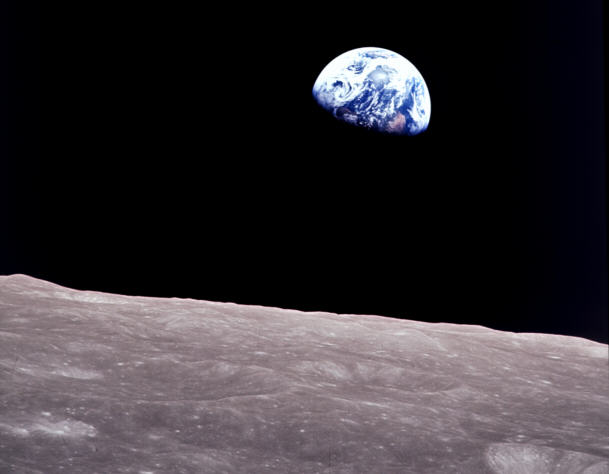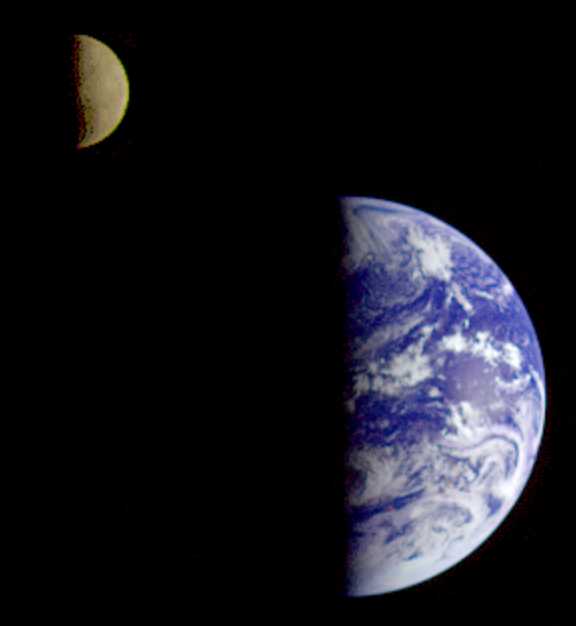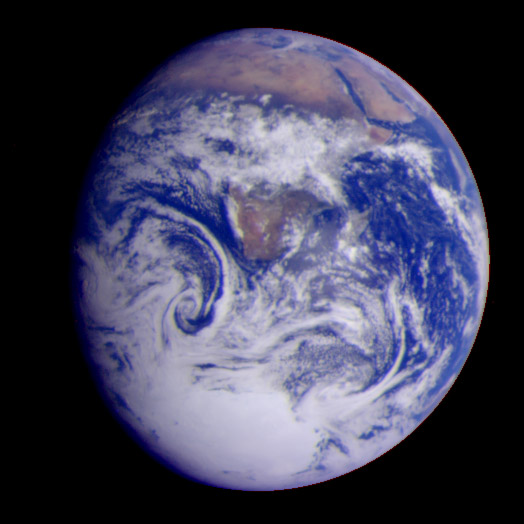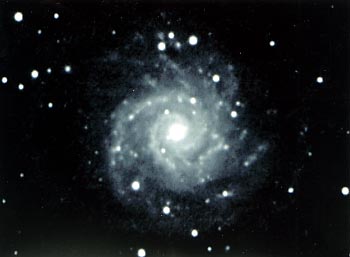 |
| Earthrise
above the lunar horizon
Taken from
Apollo 8, while orbiting
the Moon on December 22 1968
|
|
|
|
 |
| The Earth and Moon imaged by Mariner 10 from 2.6 million kilometers
while completing the first ever Earth-Moon encounter by a spacecraft capable
of returning high resolution digital color image data. These images have
been combined to illustrate the relative sizes of the two
bodies (courtesy of NASA) |
|
|
|
 |
| On December 16, 1992, 8 days after its encounter with Earth, the Galileo
spacecraft looked back from a distance of about 6.2 million kilometers
to capture this remarkable view of the Moon in orbit about Earth. The composite
photograph was constructed from images taken through visible (violet, red)
and near- infrared (1.0-micron) filters. The Moon is in the foreground;
its orbital path is from left to right. Brightly colored Earth contrasts
strongly with the Moon, which reflects only about one-third as much sunlight
as our world. To improve the visibility of both bodies, contrast and color
have been computer enhanced. At the bottom of Earth's disk, Antarctica
is visible through clouds. The Moon's far side can also be seen. The shadowy
indentation in the Moon's dawn terminator is the South
Pole-Aitken Basin,
one of the largest and oldest lunar impact features. This feature was studied
extensively by Galileo during the first Earth flyby in December
1990 (courtesy of NASA) |
|
|
|
 |
| This color image of the Earth was obtained by the Galileo spacecraft
on Dec. 11, 1990, when the spacecraft was about 1.5 million miles from
the Earth. The color composite used images taken through the red, green
and violet filters. Africa stretches from the center to the top of the
picture with the Arabian Peninsula off to its right. The white, sunlit
continent of Antarctica is at the bottom. This is a frame of the Galileo
Earth spin movie, a 500-frame time-lapse motion picture showing a 25-hour
period of Earth's rotation and atmospheric
dynamics (courtesy of
NASA) |
|
|
|
|
|
|
|
 |
| It is impossible - at
least according to current
theories, unless astronomers
can find a reflection of it
somewhere in the heavens - to
obtain a photograph of our own
galaxy, because it would
entail a journey lasting
millions of years. Instead
this is a photograph of
another galaxy, similar in shape and size to our own. It
contains several billion stars. Apart from the nucleus of the galaxy,
the bright spots are foreground stars belonging to our own Milky Way
galaxy (unfortunately, I
forgot to make a note of its
name) |
|
|